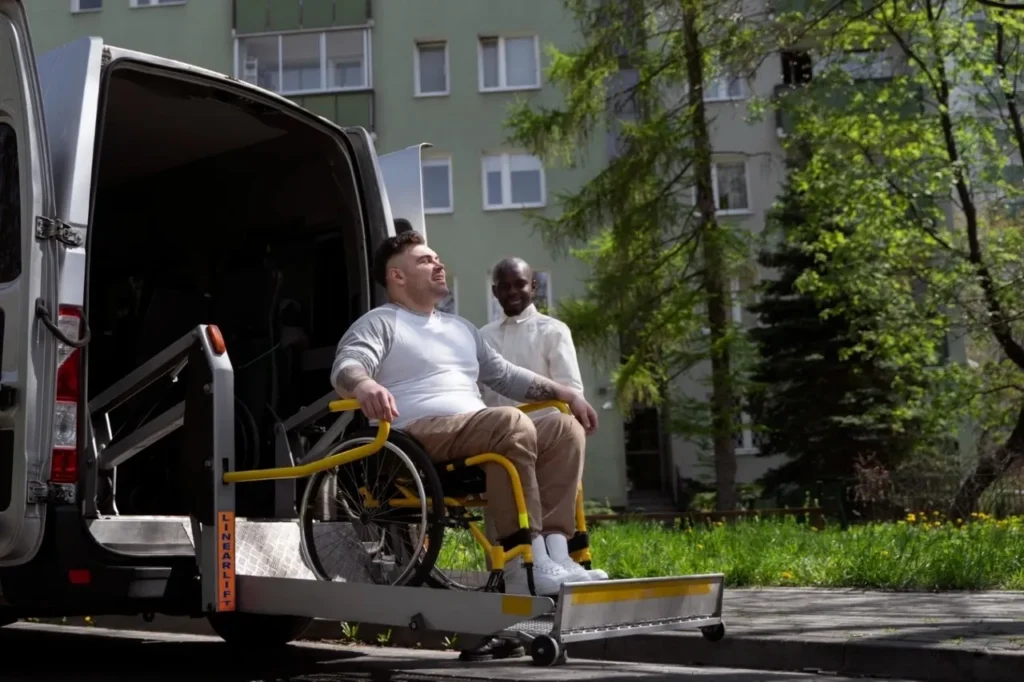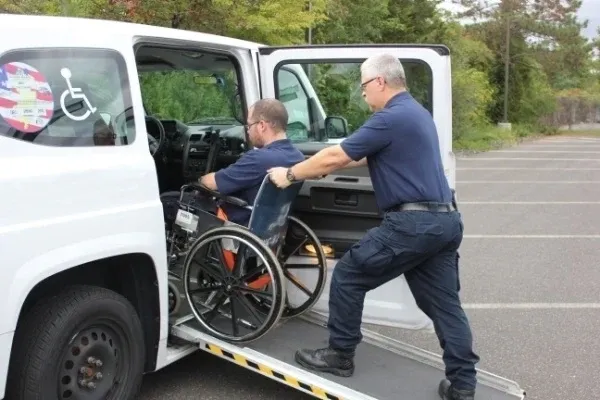People with disabilities face unique challenges when it comes to transportation. Finding a safe and reliable way to get around can be difficult, especially for those who use wheelchairs or other mobility aids. Fortunately, there are several wheelchair transportation services available that can help people with disabilities maintain their independence and improve their quality of life. In this article, we’ll explore the different wheelchair transportation services available, the benefits of using wheelchair accessible vehicles, and some tips for safe and comfortable transportation.
Wheelchair Transportation Services:
There are several types of wheelchair transportation services available to people with disabilities. Each service has its own benefits and limitations, depending on the individual’s needs and preferences. Here are some of the most common wheelchair transportation services:
Non-Emergency Medical Transportation (NEMT):
NEMT is a specialized transportation service that provides transportation to and from medical appointments for people with disabilities who require a wheelchair or stretcher. This service is typically provided by trained drivers who have experience handling medical equipment and can ensure safe and comfortable transportation. NEMT can be arranged through a healthcare provider, insurance company, or directly with a transportation provider.
Private Wheelchair Transportation:
Private wheelchair transportation is a service provided by companies that specialize in transporting people with disabilities. These companies typically have a fleet of wheelchair accessible vehicles that can accommodate different types of wheelchairs and mobility aids. Private wheelchair transportation can be used for a variety of purposes, including medical appointments, social events, and errands. Private transportation can be arranged directly with the transportation provider or through a healthcare provider or insurance company.
Public Transportation:
Many public transportation systems, such as buses and trains, now have wheelchair accessible vehicles that can accommodate people with disabilities. However, it’s important to check with your local transit authority to ensure that the vehicles are available and that the routes are accessible. Public transportation can be an affordable option for those who live in urban areas with accessible transit systems.
Benefits of Wheelchair Accessible Vehicles:
Using a wheelchair accessible vehicle for transportation can provide several benefits to people with disabilities. Here are some of the most significant benefits:
Increased Independence:
Having access to a wheelchair accessible vehicle can enable people with disabilities to travel independently and without relying on others for transportation. This can lead to increased freedom and a greater sense of control over one’s life.
Improved Quality of Life:
Being able to get out and about can improve a person’s quality of life by enabling them to participate in social activities, attend appointments, and run errands. Wheelchair accessible vehicles can also help to reduce feelings of isolation and improve mental health.
Enhanced Safety and Comfort:
Wheelchair accessible vehicles are designed to provide safe and comfortable transportation for people with disabilities. They have features such as ramps, lifts, and tie-down systems that ensure that the wheelchair is secure and that the passenger is comfortable. This can help to reduce the risk of injury and increase the overall comfort of the journey.
Tips for Safe Wheelchair Transportation:
When using wheelchair transportation services, it’s important to follow some safety tips to ensure a safe and comfortable journey. Here are some tips to keep in mind:
Plan ahead:
Make sure to book your transportation well in advance and provide any necessary information, such as the type of wheelchair or mobility aid you’ll be using. This will help to ensure that the transportation provider can accommodate your needs and provide a safe and comfortable journey.
Communicate with the driver:
Let the driver know if you have any specific needs or preferences, such as the temperature or the route you prefer to take. This will help the driver to provide a more personalized service and ensure that you have a positive experience.
wheelchair:
Make sure that the wheelchair is securely fastened to the vehicle using the provided tie-down system or seatbelt. This will help to prevent the wheelchair from moving around during transit and ensure that the passenger is safe.
Check the vehicle:
Before getting into the vehicle, check that it’s clean, well-maintained, and has the necessary features, such as a ramp or lift. If you notice any issues with the vehicle, notify the driver immediately.
Be prepared:
Bring any necessary items, such as medication or personal care items, with you on the journey. This will help to ensure that you have everything you need during the journey and can help to reduce stress and anxiety.
Conclusion:
Wheelchair transportation is an essential service that provides independence and improved quality of life for people with disabilities. Whether you’re using NEMT, private transportation, or public transportation, it’s important to prioritize safety and comfort when traveling. By following the tips outlined in this article, you can ensure a safe and comfortable journey every time. Remember, wheelchair transportation services are there to help you get where you need to go and enjoy a greater sense of independence and freedom in your life.






